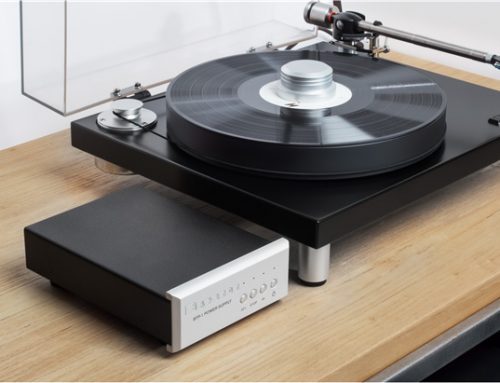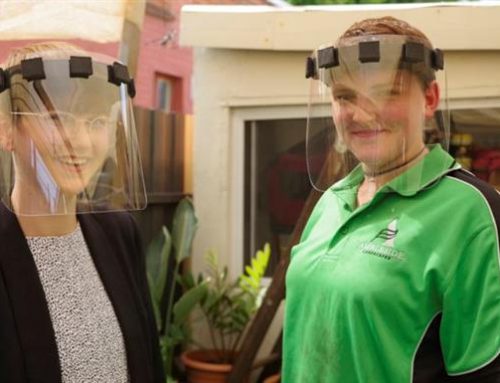Selecting a new video display can often be a difficult task. With the death of the all-too familiar CRT, one might find it daunting to sift through the information about the many new acronym technologies on the market. At a time when stores display walls of seemingly endless televisions, it’s tempting to simply close your eyes and point a finger at random hoping you’ve picked a decent set. With so many options, how could anyone without any video knowledge possibly select a good video display? There are image priorities for good video to exist. These priorities are based on what our eyes find most pleasing and when browsing a sales floor of TVs, your brain is looking for these without you intentionally knowing it. So what exactly are we looking for?
A television’s ability to produce black is the first priority, period. Ask anyone working in video post-production and they’ll agree that the ability to display a black level dark enough, without losing details in the shadows is critical. When plasma and LCD technologies first hit the market, they were often most criticised for not being able to make a black image compared to the CRT – a tough gig for the new kids on the block. The darkest black they could create was a form of milky gray. You could always count on the milky TV to be an adequate flashlight in the dark. This is still much of an issue today but to a lesser extent. The first step to finding a new display is determining its darkest black. So why is black level important for the viewer?
We watch movies because we love how they temporarily suspend us in disbelief. There is a reason why most of us never forget our favourite fairytales. Well written and detailed stories put our imagination to task, creating images of the characters we learned to love and hate in the environment they lived. We believed they were real on such frightening levels, blurring the lines of reality and fiction. Raise your hand if you are still afraid of the dark and believe that pixies, those mischievous little fairies, flutter in the woods. As adults we continue to love the art of storytelling through motion pictures and the director, as the head artist of the film production, desires to create that imagination and mood on screen for his or her viewers – you!
The quality of a television’s black can significantly change the mood of the artist’s intent. Poor black levels can devastate the look of a haunting horror film or a serious drama. Dim lighting will not exist and the TV will appear as a flat, two dimensional washed out image, almost as if we had turned on the lights within the movie. Imagine the 1967 Terence Young thriller Wait Until Dark starring Audrey Hepburn. The film’s extremely suspenseful climax is set entirely in darkness to mimic the blindness of the main character. During its theatrical run, all lights including the exit signs were turned off, suspending the theatre in absolute darkness to recreate the scene to the audience as intended. How effective would this scene be if the lights had stayed on?
The cause of this problem is usually one of two things: 1) the display device cannot create a deep black level because of design limitations or 2) a display device has the brightness control set too high. Therefore, your best option to determine the black level when shopping for a TV, is to view it in a dark room with the lights off. I recommend playing video of a movie scene shot at night when the screen is dominated with black. It will be near impossible to distinguish between televisions watching bright daylight scenes or with high ambient room lighting reflecting off the front of the TV.
Before you begin your trek to the store, I recommend that you to learn how black level affects image quality by sliding the TV’s black level control (labelled “Brightness”) to its highest and lowest points. Pay close attention to how it affects black and the overall mood of the scene. The brightness control changes the brightness of the incoming signal; moving it up washes the image to gray and moving it down will eventually crush all of the details into the TV’s lowest black. My guess is that you will find the video most pleasing when the control is set somewhere in the middle of its full range. TVs with excellent black level give 3-D TVs a run for their value. You will discover that good black level makes an image much more three dimensional by increasing the sense of depth between people in their environment – you may also see the improvement in colour and how pleasing it is to the eye. Our eyes are quite sensitive to changes in dark parts of images and will reject video that has bad black. Differences between subtle shades in darker parts of the image will be far more apparent. With a solid black level, pixies will live once again! You’ll appreciate the increased depth of the image and find your favourite “art film” far more engaging.
In a perfectly black room, absent of light from electronic displays and with all viewers wearing all-black clothing (yes, it’s true – don’t wear white socks!), contrast ratio can be described as the division between the video display’s ability to demonstrate the brightest white and the darkest black. Does this sound like your television room? If so, chances are the rest of your family has abandoned you for turning your home into a cave. Let’s knock a bit of sense into these contrast ratio numbers and you’ll understand why some TVs are set so much brighter than others on the retail floor.
Big numbers sell and any consumer would feel proud to bring home a display with a 60,000:1 contrast ratio over a piddly 30,000:1. If your definition of Friday night entertainment is watching alternating full-on 100% white and full off 0% (black) signals, maybe you can’t live without these measurements. A much more correct way to measure contrast ratio, and one widely adopted by people interested in knowing contrast within a scene of a particular film, is the ANSI contrast method. Using a checkerboard of 16 alternating black and white rectangles, this averaging measurement takes certain imaging aspects into account: screen uniformity (or lack of), the ability to display varying amounts of dark and bright parts of the image on the screen at once, as well as the reflections from the room (such as the colour of the walls). So real contrast ratio, also known as dynamic range, is partly customized to your own room environment. Remember that when you walk onto a super-bright showroom floor with all TVs cranked to the max (see the customized connection?) Now you know why all the lights were turned off for Wait Until Dark. Red exit lights, anyone?
In the previous section we determined that the first priority to good video is good black level. A display’s contrast ratio significantly improves when black levels are deeper because the division between the darkest blacks and the brightest whites becomes greater. But why focus on lowering black? Wouldn’t the image be just as pleasing if we just kept increasing the brightest white? Well, no. The eye is much more sensitive to small changes in dark images than it is to small changes in bright images. In a room with 1000 light bulbs turned on, would you notice if only one were turned off? Hardly. What about sitting in a black room and turning on one light bulb? Then the second? You’d see a dramatic change in luminance. I would be careful to not directly consider contrast ratio as an indication as to how bright the image will be overall. Just because the claimed contrast ratio is higher it doesn’t mean the TV must be brighter. Brighter is not always better.
The brightest whites shouldn’t seal the deal for you when buying a TV especially if you have a desire for accurate video. Bright whites don’t make a brighter moon to illuminate the moors for the two friends who didn’t heed the advice of the locals in An American Werewolf in London. “Stay on the road. Keep clear of the moors.” was the famous line of one of my favourite ‘80s horror films. This scene of the two friends wandering off the road takes place in the dead of night and was never intended to be retina-destroying. Instead it was intended to make the viewer feel helpless with only the moonlight as the guiding light. Would you have seen the werewolf and avoided the attack if your TV had brighter whites? Virtually all TVs are set super bright from factory to compete on showroom floors. Unfortunately in your living room this setting completely obliterates the artistic intent.
While our eyes are capable of adjusting to a decent range of contrast at the specific point we are looking at, video displays do not operate the same way. They take a whole frame into consideration which consists of many levels of black and white. Now you can see why the modified-ANSI contrast ratio is important and full-on/full-off isn’t. The ANSI method mimics regular video material within a frame while full-on/full off does not. I’m not saying that bright whites aren’t important because they are if they are to compete with direct sunlight, displayed in an airport, or to display through beer splatter at a sports bar. Many video displays are able to display the minimum recommended amount of light output for a dimly lit room without distorting the image.
Again, before venturing off to the store, try swinging the contrast control across its full range and notice its affect on video. At low contrast it appears dim like a TV tube ready for the dump. At full contrast you’ll burn your eyes out in the dark. While it may seem like a good idea on display in a store, the latter sort of viewing will tire your eyes and cause discomfort as you squint constantly readjusting for contrast. Our eyes like only a certain amount of contrast at a given point before they need to readjust and they’ll notice it when it happens. Once again, my recommendation while looking for a video display is to evaluate in a dim room to see what TVs are comfortable to watch and which ones are guaranteed to give you a sunburn or start an electrical fire. Most retailers have finally figured out that dark rooms are the best way to demonstrate TVs, too. Using a mixture of day and night movie clips, look for best division for contrast: deep blacks and an image bright enough that doesn’t cause eye fatigue. Oh, and keep clear of the moors.
When the Wizard of Oz brought colour to the screen in 3-strip Technicolor, it artistically separated the dry and dreary grays of Kansas with a vibrantly alive and colourful Land of Oz. The audience was able to visually connect with the artist’s message, with the contrasting sepia black and white and Technicolor. Isn’t this one of the many reasons why this film has remained a classic? The appearance of colour is important to the viewer but with each display manufacturer claiming to offer more and more colours, how can you tell what’s best?
The Wizard of Oz is more important than you may think; it’s a great resource to reference both the greyscale and colour capabilities of a TV. The lack of accuracy in the colour temperature, saturation and hue are a little more difficult to determine by eye than black level and contrast, however they are very important when looking for a display which produces the most accurate colours and retains the fidelity of the filmmaker’s palette. It’s very possible to like a video display with inaccurate colours. In fact, few people have actually seen their favourite movie with correct colour because virtually all televisions displays do not display colour correctly. Have you ever wondered why golf greens look neon? Red flowers look like bright flowing lava? These brighter-than-normal colours didn’t seem to bother anyone over the years so TVs continue to be intentionally designed with wide and bright eye-catching colours. But the fact is that the only people who should be in control of the colour are the filmmakers. They can colour their movie any way they want and it doesn’t need to emulate real life. Is the world around you all green like The Matrix? I know for a fact that filmmakers don’t like how consumer TVs are tampering with their colours – most of them severely – and I really believe that consumers are finally noticing it.
I performed a calibration very recently of an older ELITE FPJ-1 projector. My client noticed that the colours were not correct – and right he was. The projector was adding more colour than what was on the Blu-ray disc causing slightly gray rocks to appear yellow-green. This deviation, caused by the projector’s ability to display more colours than what is in the content, could not be corrected in the projector but only with the assistance of an external video processor. Have you ever seen a TV advertised with 130% more colours? These TVs will often make the most basic colours appear incorrect. Skin tones could appear sunburnt and what should look real looks more like a cartoon.
To understand how we see colour we need to have a very basic understanding of how our TV system works. The colours we see on TV are actually a low resolution signal “placed over” a black and white signal. The “colour” of the black and white portion of the image (which exists in colour video) is the first critical step to displaying accurate colours of the colour signal. If the underlying black and white portion of the image is tinted to green, blue, or red, then all other colours “placed over” will also be tinted that colour. Keep in mind that the ‘colour temperature’ and ‘colour’ controls adjust two entirely different aspects of the video image and are not related in adjustment but are related to the final image being displayed. We can control exactly how much colour is in white by means of colour temperature controls and calibration instruments, but as you are evaluating video without measuring instruments what are you to do?
To adjust colours for an image that’s pleasing to your eye (or an accurate picture), each TV has a colour temperature adjustment as well as colour and tint controls. Some, more advanced TVs also have an advanced colour management system (CMS), which offers 18 more colour controls. Together, all of these controls allow you to make adjustments to such picture aspects as the colour of white, the colour decoder as well as the hue, saturation and brightness of each primary and secondary colour. Utilizing these adjustments allows us to position all of the TV’s colour points correctly within the HDTV standard definition (see Figure 2). While completely useless to the average consumer, these controls are all extremely effective adjustments for experienced calibrators using advanced instruments. Preset THX picture modes usually have colours close to HDTV colour so they are good to use as a reference when shopping. While evaluating a display, I recommend viewing documentary-style video because it’s highly unlikely that the colours have been “artistically altered” by the filmmaker as they are with movies. Don’t use manufacturer demo discs or animated video as colours tend to be intentionally boosted on these discs. You’ll know we’ve left Kansas if these colours can’t be kept under control.
Before your neighbour balks at you for considering a 720p display, he may be surprised to know that a well designed low resolution TV with excellent black, contrast ratio, and colour will look far more pleasing than that no-name 1080p TV he was eyeing. Resolution, while still important, is actually lower on the priority list because our eyes just don’t look for the details first. We enjoy better blacks, contrast ratio and colours before we start thinking about the fine details present in the image. If the first three are wrong we won’t give a pixel about resolution.
How much detail we see is dependent on your seating distance. Select any screen size and the further away from the TV you are the less HD it will be. To view a seating distance/screen size/resolution chart, access last month’s article entitled “Choosing a Suitable Projector and Screen Combination For Maximum Enjoyment” on novo.press/. There is a distance when 1080p and 720p will look the same but move closer and the details become apparent. So resolution, while not at the top of the list of priorities, becomes more important as screen size gets larger and seating distance gets closer.
Great black levels: check. Excellent contrast ratio: check. Pleasing colours and grayscale: check. High resolution TV: check. What’s left? The images we feed into the TV are important and we tend to believe that the highest resolution programs offered by Blu-ray represent the best we can get. Under the right circumstances, absolutely! But please don’t throw away those low-rez DVDs just yet (I still have my laserdiscs!) – DVD can look very impressive on a TV that follows all of the above rules, especially after the TV has been correctly adjusted. DVDs will look much more impressive on a good TV than a Blu-ray on a TV that fails in the above priorities. Walk into any chain store and you will see many bad looking TVs playing a Blu-ray source. Why? The TV is failing one or more of the priorities of good video and your eyes care about that more that resolution. Only when a good black level, impressive contrast ratio, an accurate greyscale and colour, and a good source all come together, you’ll be able to kick back and enjoy a proper picture.
THX/ISF Professional Video Calibrator
HIGHEST FIDELITY CALIBRATIONS
thehighestfidelity@hotmail.com
(905) 730-5996
14 Comments
Leave A Comment
You must be logged in to post a comment.







… [Trackback]
[…] Find More on to that Topic: novo.press/the-priorities-of-good-video-what-to-look-for-when-selecting-a-new-tv-or-projector/ […]
… [Trackback]
[…] Find More to that Topic: novo.press/the-priorities-of-good-video-what-to-look-for-when-selecting-a-new-tv-or-projector/ […]
… [Trackback]
[…] Read More Information here to that Topic: novo.press/the-priorities-of-good-video-what-to-look-for-when-selecting-a-new-tv-or-projector/ […]
… [Trackback]
[…] There you can find 23219 more Information on that Topic: novo.press/the-priorities-of-good-video-what-to-look-for-when-selecting-a-new-tv-or-projector/ […]
… [Trackback]
[…] Here you will find 64078 more Info to that Topic: novo.press/the-priorities-of-good-video-what-to-look-for-when-selecting-a-new-tv-or-projector/ […]
… [Trackback]
[…] Find More on that Topic: novo.press/the-priorities-of-good-video-what-to-look-for-when-selecting-a-new-tv-or-projector/ […]
… [Trackback]
[…] Read More on that Topic: novo.press/the-priorities-of-good-video-what-to-look-for-when-selecting-a-new-tv-or-projector/ […]
… [Trackback]
[…] Read More to that Topic: novo.press/the-priorities-of-good-video-what-to-look-for-when-selecting-a-new-tv-or-projector/ […]
… [Trackback]
[…] Info to that Topic: novo.press/the-priorities-of-good-video-what-to-look-for-when-selecting-a-new-tv-or-projector/ […]
… [Trackback]
[…] Information to that Topic: novo.press/the-priorities-of-good-video-what-to-look-for-when-selecting-a-new-tv-or-projector/ […]
… [Trackback]
[…] Find More on on that Topic: novo.press/the-priorities-of-good-video-what-to-look-for-when-selecting-a-new-tv-or-projector/ […]
… [Trackback]
[…] Read More Info here to that Topic: novo.press/the-priorities-of-good-video-what-to-look-for-when-selecting-a-new-tv-or-projector/ […]
… [Trackback]
[…] Here you will find 12552 more Information on that Topic: novo.press/the-priorities-of-good-video-what-to-look-for-when-selecting-a-new-tv-or-projector/ […]
… [Trackback]
[…] Find More Info here on that Topic: novo.press/the-priorities-of-good-video-what-to-look-for-when-selecting-a-new-tv-or-projector/ […]